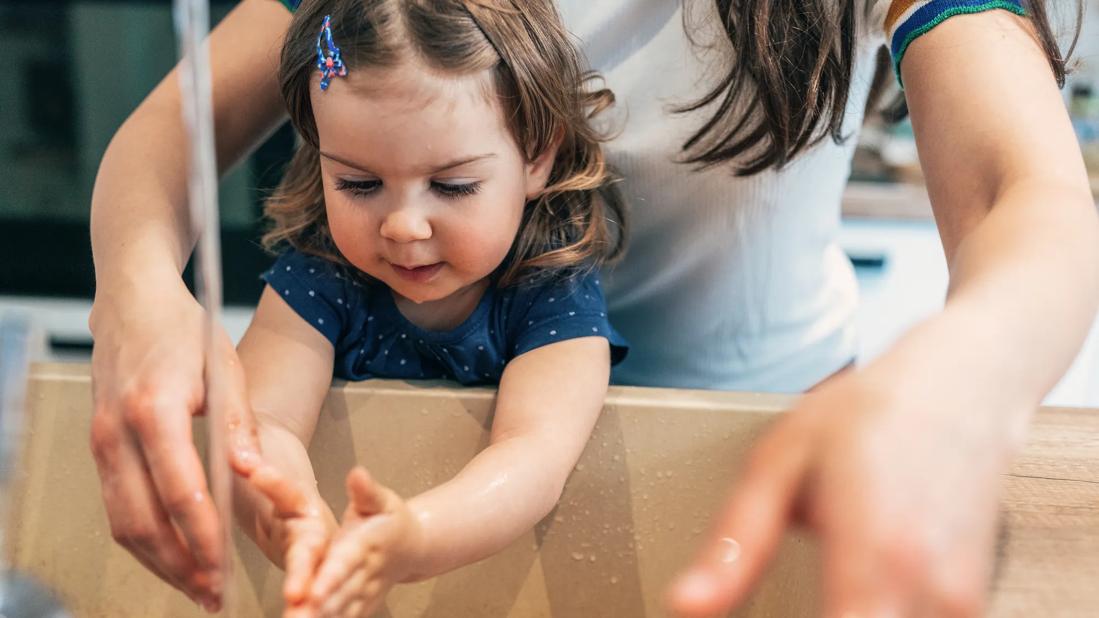This child development strategy is all about meeting your child where they are

Scaffolding is a technique for teaching new skills that’s based on three key principles:
Advertisement
Cleveland Clinic is a non-profit academic medical center. Advertising on our site helps support our mission. We do not endorse non-Cleveland Clinic products or services. Policy
We’re focusing on children. But scaffolding’s a great strategy to teach anyone a new skill. Teachers and psychologists practice scaffolding. So do parents, doctors, programmers, project managers and more.
Pediatric neuropsychologist Lindsay Katz, PsyD, breaks down the benefits of scaffolding for child development.
Instructional scaffolding works a lot like physical scaffolding (the temporary structures that support construction workers while they build tall buildings).
To scaffold properly, you need to identify what psychologists call the “zone of proximal development.” Developed by psychologist Lev Vygotsky, the zone of proximal development is the gap between a task being so hard you can’t do it even if someone helps you and a task being easy enough that you can do it alone.
Advertisement
When you scaffold, you’re not focusing on hitting a specific milestone. You’re meeting your kid in their unique zone of proximal development and helping them grow new skills.
For example, your 2-year-old may be singing their ABCs like a champ. But that doesn’t mean they can write out the alphabet, even with you helping. Teaching them to identify letters with flashcards is a developmentally appropriate skill you can scaffold.
Once you know where you’re starting from, you break down the skill or task and teach it step by step, providing lots of support and guidance along the way. You don’t move forward until your child can perform the previous step by themself. You’re building on existing skills and adjusting the level of support (and difficulty) over time. Your child has mastered the skill or task when they can perform the whole thing, beginning to end, without scaffolding. (That is, without your help.)
So, what exactly does scaffolding look like? Dr. Katz says it depends on your kid’s age and developmental level. But common approaches include:
So, now you have a basic idea of what scaffolding is. But it’s equally important to know what it isn’t.
“Scaffolding isn’t providing answers or just doing the task yourself,” Dr. Katz clarifies. “The assistance you offer should be aimed at developing the child’s skillset so they can eventually transition to independence.” For example, if your toddler can’t get the puzzle piece to fit, don’t just put the piece in for them. Turn it, hand it back to them and let them add it to the puzzle themself.
It makes sense in the abstract. But what does scaffolding a task actually look like? Dr. Katz often uses the example of teaching a child to wash their hands.
“Once you know how to do something, it becomes automatic,” she explains. “You don’t think about all the steps that go into activities like washing your hands. But if someone hasn’t done it before, it’s pretty complex.”
To teach this important life skill using scaffolding, you:
Advertisement
Eventually, your child will be washing their own hands!
“You can use this process to teach a lot of different skills, including larger tasks that involve multiple steps, like doing laundry,” Dr. Katz adds.
The most obvious benefit of scaffolding is that it helps your child master a new skill or gain knowledge. But there are lots of ways to learn. The reason scaffolding is so effective is that it focuses as much on the journey as it does on the outcome. Scaffolding:
Advertisement
We all want what’s best for our kids. And it’s natural to worry about milestones, targets and developmental markers or delays. But scaffolding only works when it’s built around your child’s needs.
“Not every task or skill you teach is going to be a success right away,” Dr. Katz notes. “It’s crucial to focus on what’s developmentally appropriate for your child. You may have to move backward or skip forward sometimes. And that’s OK.”
Scaffolding helps each child reach their full potential. What that looks like will vary from kid to kid. But that doesn’t mean you shouldn’t contact your child’s pediatrician if you have concerns. Share with them the skills your little one’s struggling with — whether it’s identifying letters, stacking blocks or identifying emotions. Your pediatrician can offer advice and suggest next steps.
Advertisement
Learn more about our editorial process.
Advertisement

Around age 4, start talking to your child about what an emergency is and how to call emergency services

Most kids are eligible to start kindergarten when they’re 5 — but age isn’t the only factor to consider

Tiny taste-testing is a way babies can explore their world, relieve aching gums and self-soothe

Start with a few minutes a day and work your way up to an hour or more to help your baby hit developmental milestones

This important activity helps babies reach developmental milestones like rolling, sitting up and crawling

Being the oldest, youngest or middle child may affect characteristics and traits, but the theory isn’t an official medical or psychological diagnosis

Being the oldest female sibling in your family can have an impact on your personality and behavior

Your little one may be up and walking as early as 9 to 12 months

Start having sex about 72 hours before ovulation, then at least every other day during your fertile window

Attachment theory suggests that your earliest relationships shape connections throughout your life

It isn’t a recognized mental health disorder, but research shows that problematic social media use can negatively affect your mental health, self-esteem and sleep